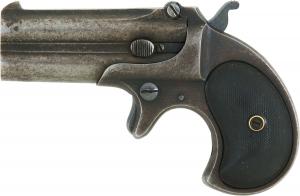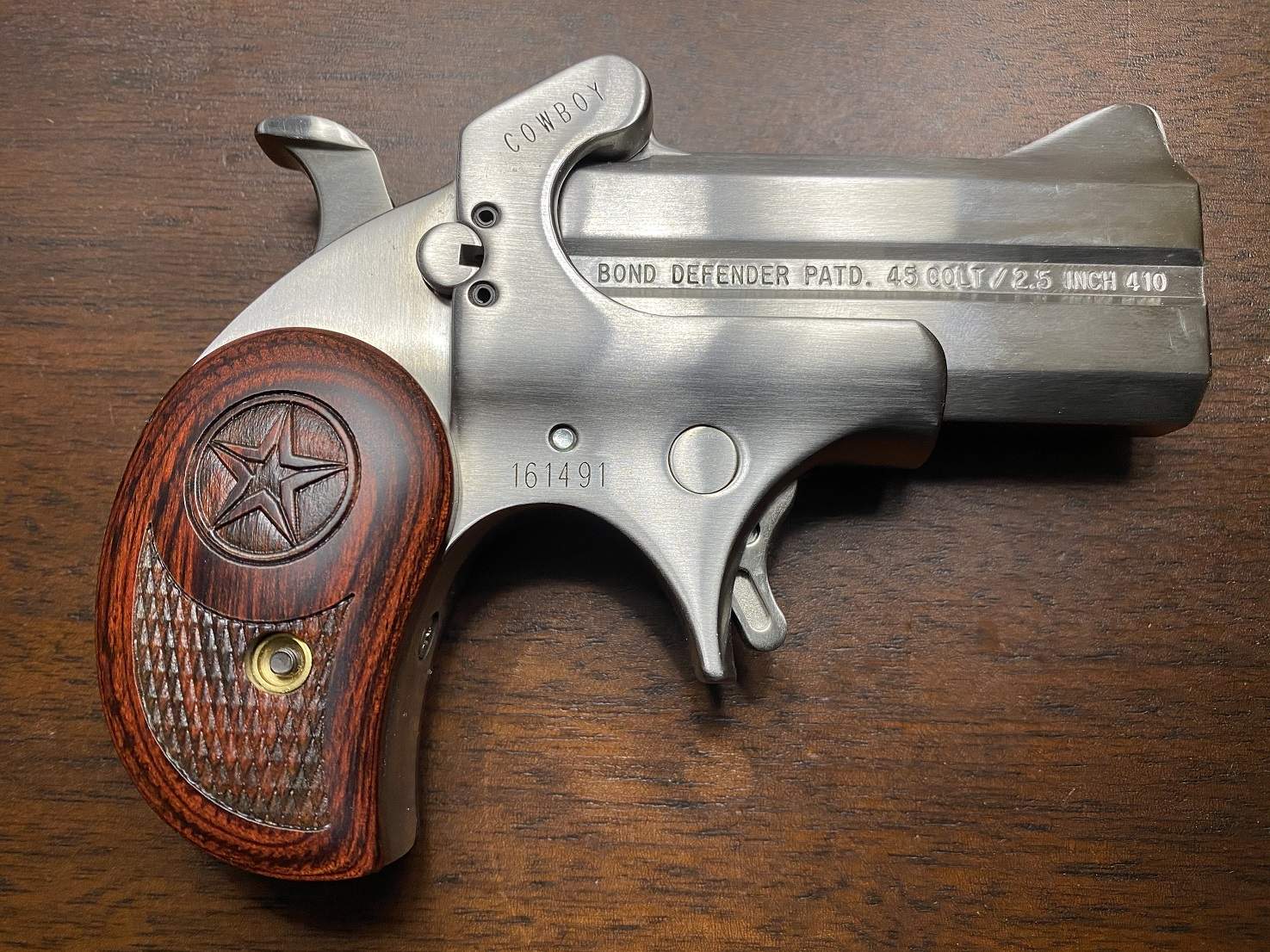Derringers – Legendary Pocket Pistols
Derringer became a generic term for small pistols, and yes, the inventor's name had one R not two.
Henry Deringer is one of the most prestigious gun inventors of the 19th century. His Philadelphia Derringer was a small pocket pistol that was widely copied and manufactured around the country. Many people were attracted by the small size and easy handling of the Philadelphia Derringer, and it quickly became widely known, as did Deringer, even as his namesake pistol had been spelled incorrectly (the accurate spelling of his name is “Deringer”). Regardless of this oversight, Deringer became known worldwide for having designed and produced the first single shot, muzzle-loading pistol of its size, and Derringer became a household name. This huge figure in the history of firearms opened up a new era for the design and manufacture of American firearms and influenced countless numbers who followed him.

Born in Pennsylvania in 1786, Henry Deringer apprenticed as a gunsmith for his father, an experienced and dedicated gun maker. He would soon found his own company and begin to experiment with designs for what would become his first pocket-sized handgun- a gun that would make history. The 1800’s represented a golden era for Deringer and his pocket pistol. By this time, the gun had been copied and re-copied by so many competitors, the word Derringer became synonymous with the words, pocket pistol. Even In the ensuing years, Derringer became a generic term for small pistols. Derringer pistols were popular because they were easy to conceal and extremely accurate, especially from short distances.
When Henry Deringer conceived of his famous pocket pistol, he could not have forecast how popular the firearm was destined to become. The Derringer was not a repeating firearm such as the revolvers of the time. Rather, the Derringer boasted other advantages, including firing rim-fire cartridges and a barrel that pivoted sideways for easy reloading access. It was a remarkably innovative pistol and it did not take long for other firearms manufacturers to add their own improvements to Deringer’s initial designs. For example, Remington carefully studied the small Derringer and determined that it could be improved upon by adding a second barrel and a chamber capable of facilitating the 41 rim-fire cartridge. These modifications were present in the Remington “Derringer,” a gun that managed to receive even more popular and critical praise, especially at the end of the 19th century.
No matter what other improvements or modifications gun makers have brought to the original Derringer, the original inventor, Henry Deringer, continued to build a reputation as a true innovator and entrepreneur in his time. Derringer pistols were sold to civilians for the purpose of personal protection, as well as to military forces. History reveals that a few notorious models fell into the wrong hands, and in doing so, completely changed the course of history.

Pictured: The Remington .41 caliber Double Derringer pistol, confiscated from gangster John Dillinger when he was arrested in Tucson, Arizona on January 25, 1934, six months before Dillinger was fatally gunned down in Chicago. This particular Derringer sold for $95,600 at a public auction in Dallas, Texas on July 25, 2009, only a few days after the 75th anniversary of Dillinger's death. (UPI Photo/Heritage Auction Galleries).
The first such example stands out as one of the most tragic occurrences in American history, when a Derringer pistol was used by John Wilkes Booth to assassinate Abraham Lincoln, the 16th President of the United States. The Derringer used that fatal day remains the single most notorious, and thereby, most famous, small pocket pistol ever used.
The post-Civil War era saw more advancements in firearms produced by Derringer. The 1872 Derringer pistol was chambered for a .22 short caliber cartridge and featured either a nickel or gold frame and a single, blue, 8-inch barrel for gun collectors. Made from zinc alloy and hardwood, it was preferred especially by those people looking for a small gun that was easy to conceal. Even as Derringer saw increased competition from companies such as Colt and Remington, the company maintained its popularity and reputation both for quality and performance.
The 1871 Derringer is equally as famous as the 1872 Derringer pistol. Perhaps the best known model is the .31 caliber black powdered version. Fitted with a black frame and a gold barrel, it is arguably one of the finest small pistols ever made. The finish is exquisitely crafted and the firearm does not disappoint when it comes to custom zinc alloy and hardwood accessories and appointments, not the least of which include hand-crafted presentation cases, made only from the finest wood and lined with velvet on the inside. You might also like to take a look at all of their unique wall plaques, made especially for gun collectors and enthusiasts.
There are more legends and stories than can be counted surrounding the Derringer name and label. Some describe detailed accounts of gamblers and outlaws, others of heroes, vigilantes and revolutionaries. In the 1850’s, the reality of social life was that many people carried concealed weapons for protection purposes. They not only could be concealed, but they also provided non-expert marksmen with incredible precision for such small instruments. And once again in 1856, Henry Deringer came out with a new and improved small pocket pistol. Demand grew even more as the new model had been fitted for metallic cartridges and had achieved a much higher standard for efficiency than its predecessor.

Soon after, new loading mechanisms were implemented for the Derringer that included the 1861 Breech-Loading rifle, introduced by Daniel Moore. His model was essentially the same, small-pocket pistol, with a single barrel chambered for a .41 rim-fire cartridge. The loading system, however, represented a new innovation, one that attracted the attention of the National Arms Company, which ultimately decided to buy the new and improved Derringer. 1870 saw the allowance of a patented barrel with a side-swinging mechanism, the invention of Alexander Thuer. This model managed to maintain the popularity of the Derringer until the beginning of the 20th century, when the first automatic pistols began to be released.
Even as automatic pistols began to replace and take over Derringer’s popularity, the second half of the 20th century saw the re-release of the original 1872 Derringer, this time chambered for .22 caliber short cartridges, and made to be affordable without compromising popular features. And as there were many collectors interested in the Derringer’s return, other models were re-introduced for production in the years to come.
Nowadays, the term Derringer is ubiquitously associated with any small-size pocket pistol. The first model that Henry Deringer designed remains a historic invention, due largely to its accuracy and ease of handling and concealment. The features of the original Derringer most definitely influenced other significant firearms manufacturers of the day, and many of them quickly began to manufacture their own models. Henry Deringer will always be a giant in the world of firearms design and production and Derringer remains a household name for performance, accuracy and innovation.